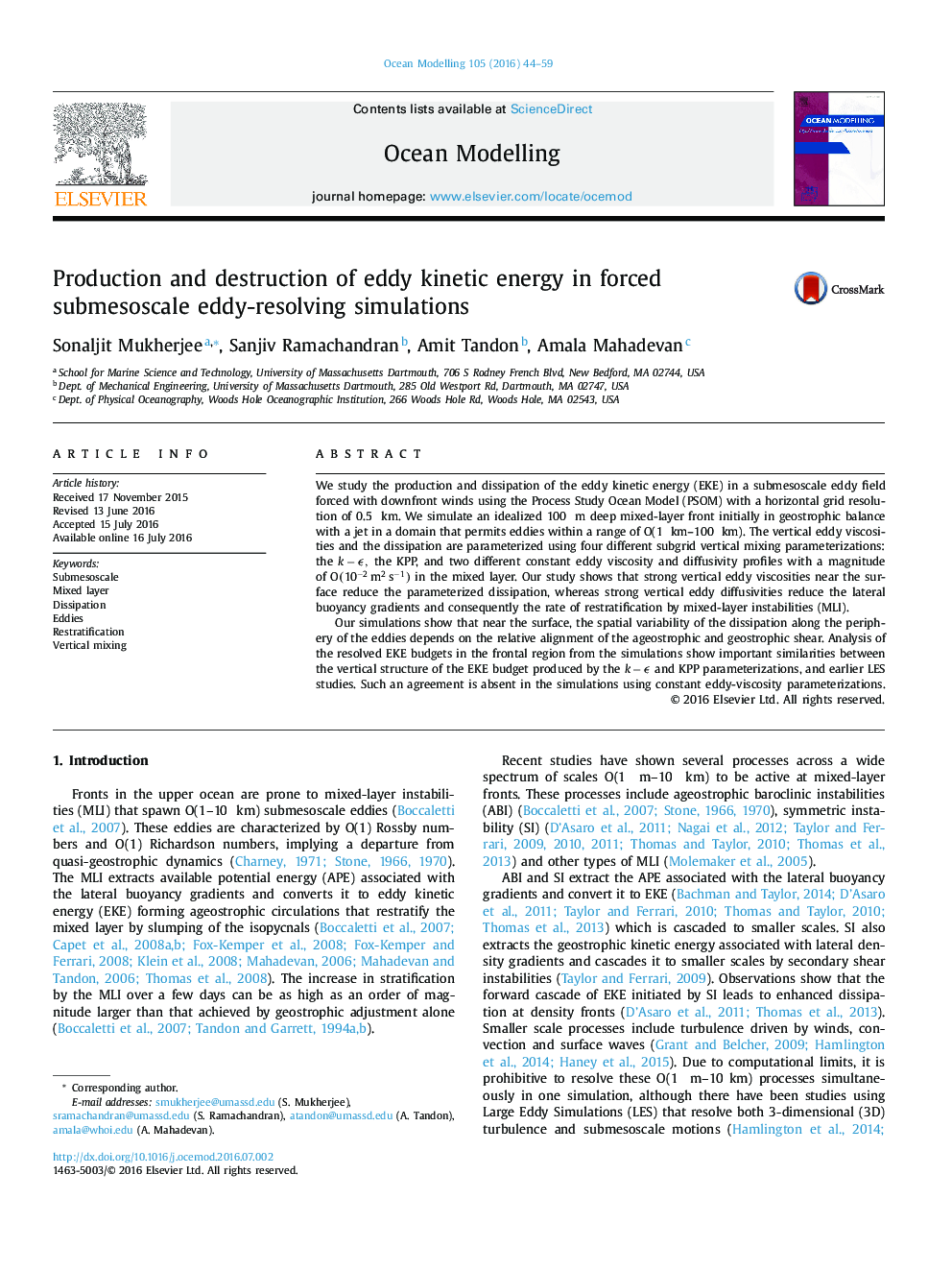| Article ID | Journal | Published Year | Pages | File Type |
|---|---|---|---|---|
| 6388016 | Ocean Modelling | 2016 | 16 Pages |
â¢Strong eddy diffusivities reduce the rate of MLI induced restratification.â¢The Kâϵ and KPP parameterizations form a resolved EKE budget that is qualitatively agreeable to the earlier LES results, unlike the constant eddy viscosity parameterizations.â¢The restratifying edge of the eddies show enhanced dissipation, whereas the destratifying edge shows weak dissipation.â¢The ratio of the magnitudes of the submesoscale buoyancy flux to the small-scale buoyancy flux in a Kâϵ parameterization, is qualitatively similar to earlier LES results of wind-forced mixed-layer fronts.
We study the production and dissipation of the eddy kinetic energy (EKE) in a submesoscale eddy field forced with downfront winds using the Process Study Ocean Model (PSOM) with a horizontal grid resolution of 0.5 km. We simulate an idealized 100 m deep mixed-layer front initially in geostrophic balance with a jet in a domain that permits eddies within a range of O(1 km-100 km). The vertical eddy viscosities and the dissipation are parameterized using four different subgrid vertical mixing parameterizations: the kâϵ, the KPP, and two different constant eddy viscosity and diffusivity profiles with a magnitude of O(10â2m2sâ1) in the mixed layer. Our study shows that strong vertical eddy viscosities near the surface reduce the parameterized dissipation, whereas strong vertical eddy diffusivities reduce the lateral buoyancy gradients and consequently the rate of restratification by mixed-layer instabilities (MLI).Our simulations show that near the surface, the spatial variability of the dissipation along the periphery of the eddies depends on the relative alignment of the ageostrophic and geostrophic shear. Analysis of the resolved EKE budgets in the frontal region from the simulations show important similarities between the vertical structure of the EKE budget produced by the kâϵ and KPP parameterizations, and earlier LES studies. Such an agreement is absent in the simulations using constant eddy-viscosity parameterizations.
